Share the post "How to Stretch a Soccer Jersey or Apparel (Great Ideas)"
We all have a favorite item we wear more than others, and a player’s is their jersey. But it’s frustrating when they don’t fit properly! There are various methods for stretching the polyester fabric to restore it to its former size, some of which are more difficult than others. It all depends on how much stretching your polyester shirt or garment needs.
Here’s some of the ways we’ll show you how to stretch your garment with step-by-step instructions.
- Stretching polyester with hands, body, spray, iron, washing machine, and more.
Learn how to stretch a soccer jersey or any other apparel using these simple methods.
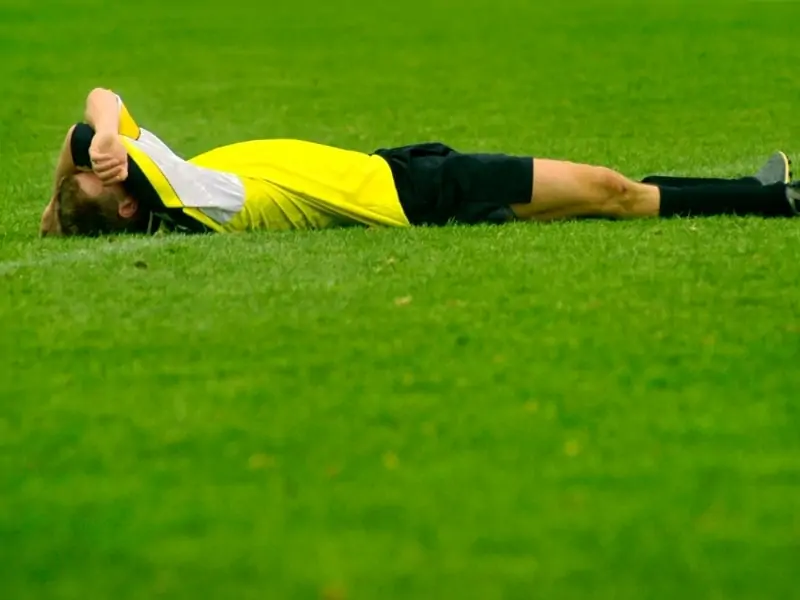
- Stretch Polyester with Your Hands
- Fabric Stretcher Spray
- Use a Hair Conditioner
- Stretch a Soccer Jersey Using Your Body
- Use the Washing Machine
- Use Clothespins to Stretch a Soccer Jersey
- Use an Iron
- Steaming
- Are Soccer Jerseys Tight?
- Do Jerseys Shrink in the Dryer?
- How to Prevent Soccer Jerseys from Shrinking?
- Official Soccer Jerseys
Stretch Polyester with Your Hands
To perform this method, fill a spray bottle halfway with hot water and spritz both sides of the fabric until damp but not drenched. Begin at the upper side area of the garment and pull the material outwards with your hands to stretch it wider. Keep doing this as you get closer to the bottom of the jersey.
If the piece is too short, use one hand to hold the top of the fabric and the other to hold the bottom. Stretch the fibers by pulling your hands away from each other. Repeat the tugging procedure by moving both arms over an inch or two and repeating the process until you reach the desired length.
It’s also a good idea to stretch the fabric by placing your arms inside the jersey. As you move from one end of the jersey to another, slide your arms in and pull outward. Position the item on a hanger to dry naturally in the wind once stretched.
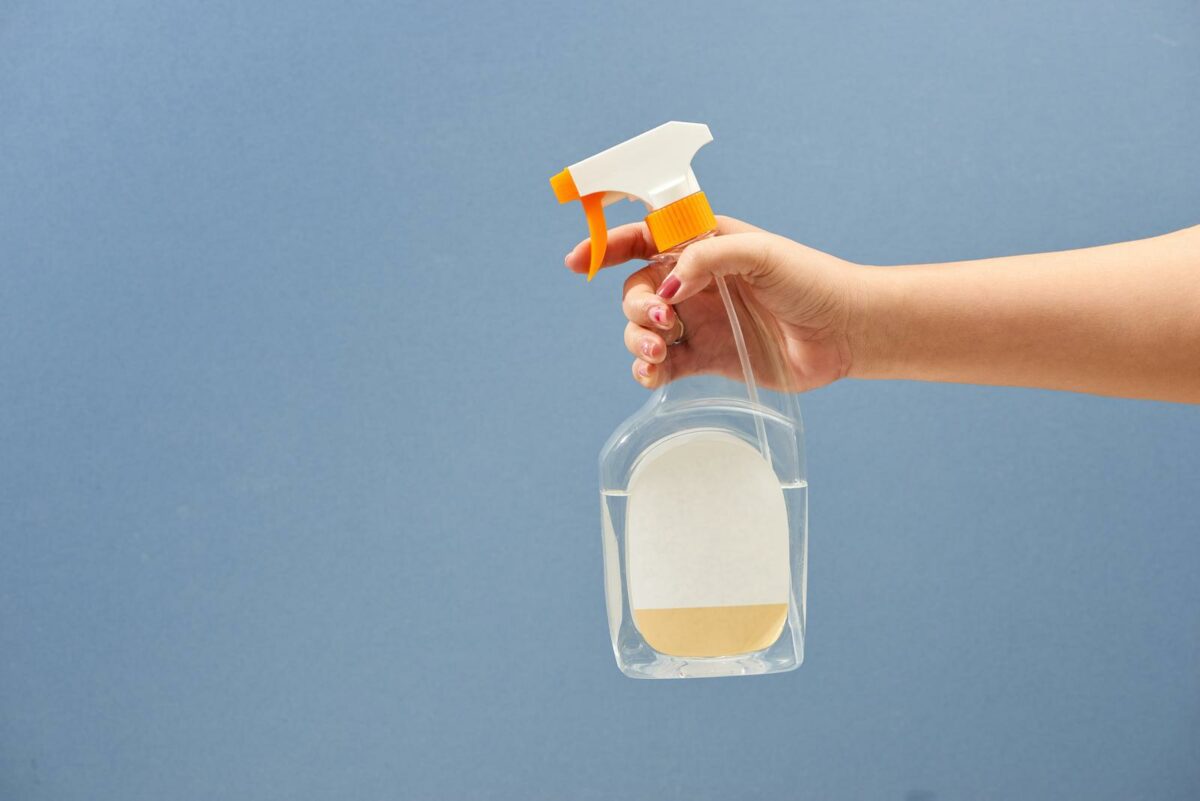
Fabric Stretcher Spray
Using a fabric stretcher to stretch a soccer jersey is practical, especially if you need to increase the size or loosen tight areas slightly. Fabric stretchers are typically liquid solutions that relax the fabric’s fibers, allowing for gentle stretching. Here’s how to use a fabric stretcher for a soccer jersey:
Materials Needed:
- Fabric Stretcher Spray: Commercially available fabric stretching spray.
- Clean Water: If dilution is required.
- Spray Bottle: If the fabric stretcher doesn’t come in a spray form.
- Flat Surface: Such as an ironing board or a clean table.
- Towels: To lay under and over the jersey.
Steps:
- Prepare the Area: Lay a towel on a flat surface and place the soccer jersey on top of it. If the jersey has prints or designs, consider turning it inside out to protect them.
- Apply the Fabric Stretcher: Follow the instructions on the fabric stretcher product. Some may need to be diluted with water. Spray the solution evenly across the areas of the jersey you wish to stretch. Ensure the fabric is damp but not overly saturated.
- Gently Stretch the Fabric: Start stretching the jersey gently with your hands. Focus on the areas that need more room, such as the chest, sleeves, or length. Pull the fabric evenly to avoid distortion.
- Secure the Stretched Jersey: You can use weights or other objects to stretch the jersey. Paint the edges to a foam board or similar surface to maintain the stretch.
- Let it Dry: Allow the jersey to air dry completely while stretched. This process sets the fibers in their new, stretched position.
- Check the Fit: Once dry, try on the jersey to check the fit. If more stretching is needed, repeat the process.
Tips:
- Test First: Always test the fabric stretcher on a small, inconspicuous jersey area first to ensure it doesn’t damage the fabric or alter the color.
- Even Application: Ensure the stretcher is applied evenly to avoid uneven stretching.
- Follow Instructions: Adhere to the specific instructions provided with the fabric stretcher product for the best results.
Caution:
- Fabric Compatibility: Check that the fabric stretcher is suitable for the material of your soccer jersey. Some stretchers may not be compatible with certain fabrics.
- Avoid Overstretching: Be cautious not to overstretch the jersey, as this can lead to permanent fabric damage or distortion.
- Protect Designs and Prints: Be careful with jerseys with prints, logos, or embroidery, as stretching can distort these designs.
Using a fabric stretcher can be an effective way to make a soccer jersey more comfortable, but it’s important to proceed carefully to avoid damaging the jersey.
Here’s the most popular brand:
Product: Updated 2024-07-24 | Images: Amazon Product Advertising API | #ad - soccerblade.com is an Amazon Associate
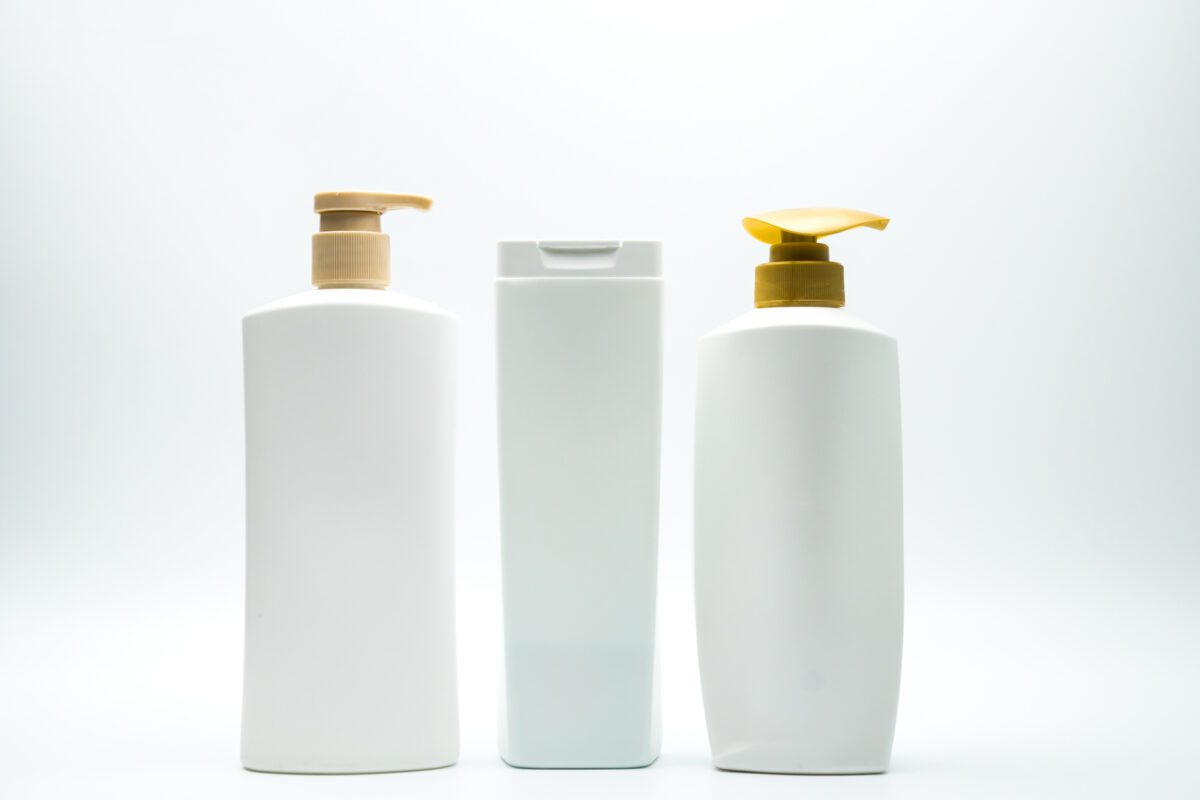
Use a Hair Conditioner
If ordinary water doesn’t stretch your polyester, use a hair conditioner to relax the fibers and make stretching easier. Here’s how to stretch your soccer jersey with a little conditioner and warm water.
Stretching a soccer jersey using a hair conditioner is a method that can help relax and loosen the fabric’s fibers, making it easier to stretch. This technique benefits jerseys made of natural fibers like cotton, but it can also work on some synthetic blends. Here’s how to do it:
Materials Needed:
- Hair Conditioner (preferably a cheap, basic one without special additives)
- Warm Water
- A Basin or Sink
- Clean Towels
Steps:
- Prepare the Solution: Fill a basin or sink with warm water. Add a generous amount of hair conditioner to the water. The exact amount can vary, but a good rule of thumb is about a tablespoon for a small basin.
- Soak the Jersey: Submerge the soccer jersey in the solution. Make sure it’s fully immersed and soaked with the conditioner water.
- Let It Sit: Leave the jersey to soak in the solution for 15-30 minutes. The conditioner will help soften and relax the fabric fibers.
- Gentle Stretching: After soaking, gently stretch the jersey while it’s still wet. Focus on areas that need more room, like the sleeves, chest, or length. Be careful not to overstretch.
- Rinse Thoroughly: Rinse the jersey in cold water to remove all traces of conditioner. You can do this under running water or refilling the basin with clean water several times.
- Dry the Jersey: Lay the jersey flat on a clean towel. Roll the towel and jersey together to squeeze out excess water gently, then unroll and lay the jersey flat to air dry. Avoid wringing the jersey, as this can damage the fabric.
Tips:
- Test First: If you’re unsure how the jersey will react, test a small, inconspicuous area first.
- Avoid Heat: Do not use hot water or a dryer, as heat can shrink the fabric.
- Even Stretching: Stretch the jersey evenly to maintain its shape and fit.
Caution:
- Fabric Suitability: This method works best on natural fibers. Synthetic materials, like those often used in soccer jerseys, may not respond as well.
- Potential for Damage: Overstretching or harsh chemicals in some conditioners can damage the fabric.
- Color Fastness: Check the color fastness of the jersey before soaking, as some dyes may run or fade.
Using a hair conditioner is a gentle way to stretch a soccer jersey, but it’s essential to proceed with caution and pay attention to the type of fabric and the jersey’s care instructions.
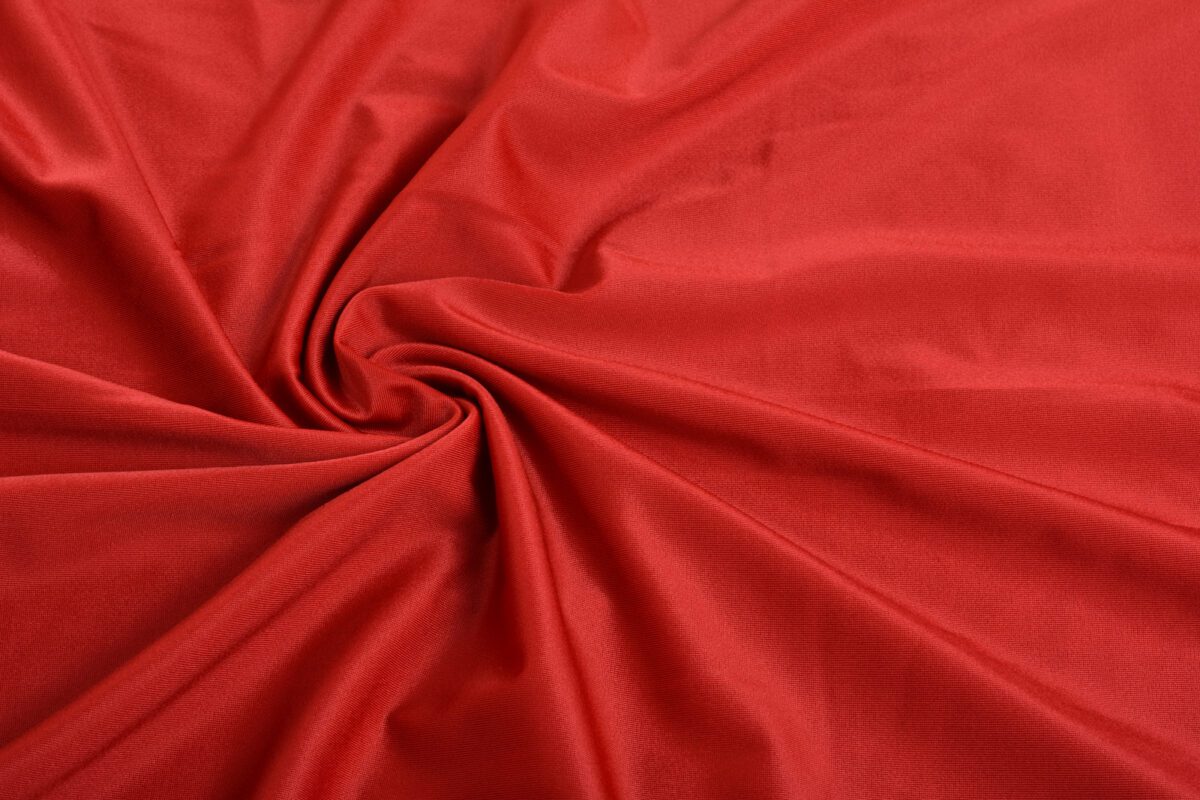
Stretch a Soccer Jersey Using Your Body
Stretching garments to fit your contour is easy with your body. While not the most pleasant option, it accomplishes getting your jerseys to fit perfectly. Fill a large bathtub or sink halfway with warm water and soak the jersey. Squeeze out as much water as possible from the fabric, then slip it on while it’s still moist.
If the shirt has hooks, make sure they’re attached to the eyelets so it can expand correctly. While the shirt is drying, move about the home doing physical tasks to assist the fabric expand to your shape. Gentle exercises and body movements can work to broaden the material even further.
Stretching a soccer jersey using your body is a method that relies on the natural stretch of the fabric while wearing it. This approach is beneficial for minor adjustments in fit and can be effective for materials with some elasticity. Here’s how to do it:
Materials Needed:
- The Soccer Jersey
- Comfortable Undergarments (optional but recommended for hygiene)
Steps:
- Wear the Jersey: Put on the soccer jersey over comfortable undergarments. Ensure the jersey is clean, especially if it’s new.
- Identify Tight Areas: Move around in the jersey to identify tight or restrictive areas. Common areas include the chest, shoulders, and waist.
- Gentle Stretching: Use your hands to stretch these areas gently. For example, if the chest area is tight, you might hold the fabric near the armpits and gently pull it outward.
- Body Movements: Engage in light activities or exercises while wearing the jersey. Movements like stretching your arms, twisting your torso, or bending can help naturally stretch the fabric.
- Wear for an Extended Period: Keep the jersey on for a few hours. Your body movements throughout this time will help stretch the fabric gradually.
- Reassess Fit: After wearing the jersey, take it off and assess the fit. You can repeat the process if it’s still tight in some areas.
Tips:
- Be Gentle: Avoid overstretching or pulling too hard on the fabric, which can cause tears or distort the jersey’s shape.
- Even Stretching: Stretch the jersey evenly on both sides to maintain symmetry.
- Hydration and Comfort: Stay hydrated and take breaks if you’re engaging in physical activities while wearing the jersey.
Caution:
- Risk of Overstretching: There’s a risk of overstretching the fabric, which can lead to a permanently misshapen jersey.
- Material Matters: Some materials may not stretch much or lose shape. Synthetic fibers like polyester (common in soccer jerseys) have limited stretch.
- Avoid Extreme Activities: Avoid activities that strain the fabric, like contact sports or heavy lifting.
Using your body to stretch a soccer jersey is a safe and natural method, especially for making minor adjustments in fit. It’s important to listen to the fabric and your body to avoid damaging the jersey or causing discomfort.
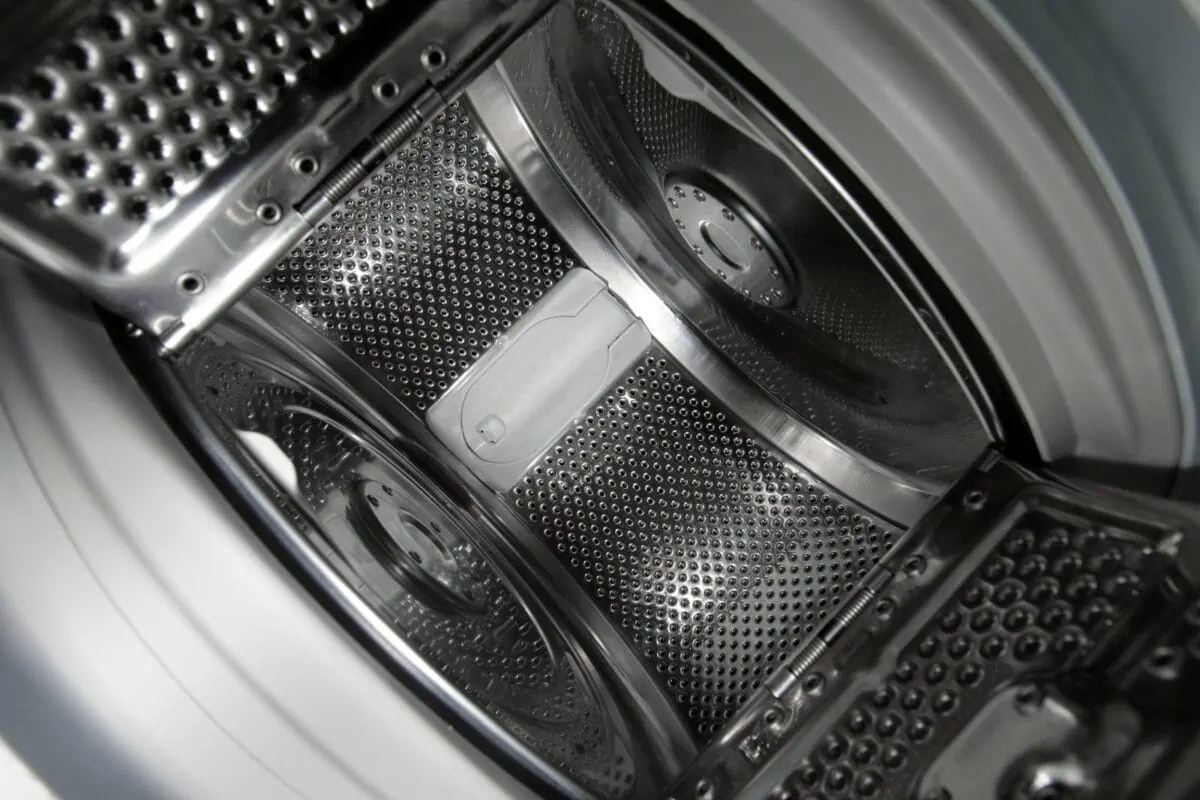
Use the Washing Machine
The washing machine is an excellent alternative if you don’t have time to extend a garment by hand. It’s also the most effective approach to get stains out of polyester. Turn the jersey inside out and wash it on the relatively warm water cycle in the washing machine. If the item isn’t filthy, using laundry detergent isn’t necessary. To protect the clothing from leaking or fading:
- Add one quart of white vinegar to the washer during the washing cycle.
- Remove the cloth from the machine and spread it on a flat surface.
- Stretch the cloth outward and place a large load, such as a thick book, at each corner to keep it in place while it dries.
Stretching a soccer jersey using a washing machine involves a combination of water, heat, and mechanical action to relax and expand the fabric fibers. However, this method should be approached cautiously, as it can potentially damage the jersey if not done correctly. Here’s a guide on how to do it:
Materials Needed:
- Washing Machine
- Vinegar
Steps:
- Prepare the Jersey: Turn the jersey inside out to protect any prints or logos. Check the care label for washing instructions and fabric composition.
- Set the Washing Machine: Choose a gentle cycle with warm water. Avoid hot water, as it can shrink or damage the fabric, especially if it’s synthetic.
- Add Vinegar: Add one quart of white vinegar to the washer during the washing cycle. This can help loosen the polyester fabric.
- Start the Washing Cycle: Let the jersey go through the gentle cycle. The combination of warm water and the mechanical action of the washing machine can help loosen the fibers.
- Remove and Stretch: Promptly remove the jersey once the cycle is complete. Gently stretch it by hand in the areas you want to loosen, such as the width, length, or sleeves.
- Air Dry: Lay the jersey flat or hang it to dry. Avoid using a dryer, as the heat can cause shrinkage or damage.
- Repeat if Necessary: If the jersey hasn’t stretched enough, you can repeat the process. Be cautious not to overdo it.
Tips:
- Check Fabric Type: Ensure the jersey’s material suits this method. Some fabrics may not respond well to washing machine stretching.
- Even Stretching: Stretch the jersey evenly to maintain its shape and fit.
- Monitor Closely: Keep an eye on the jersey during the washing process, especially if it’s your first time trying this method.
Caution:
- Risk of Damage: There’s always a risk of damaging the jersey, mainly if it’s made of delicate materials or has sensitive prints.
- Shrinkage Possibility: Some materials might shrink instead of stretching, especially under heat.
- Avoid High Heat: Do not use hot water or a hot dryer, as this can set the fibers in a shrunken state.
Using a washing machine to stretch a soccer jersey is a more aggressive method and may not be suitable for all types of jerseys. It’s important to consider the material and construction of the jersey before attempting this method.
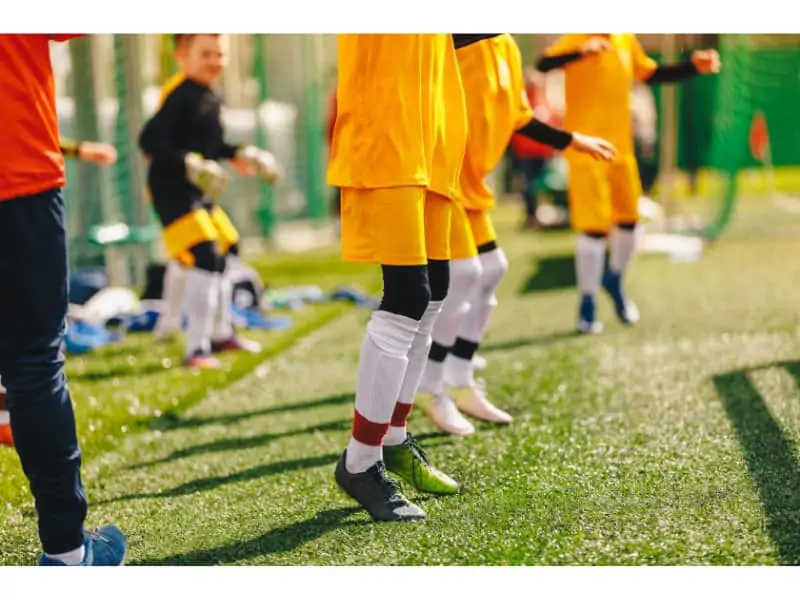
Use Clothespins to Stretch a Soccer Jersey
Clothespins can be used to hang your clothes to dry, but they can also stretch your jersey back to its original size and form. Put clothespins in place, walk out the door, and let the jersey expand quickly to make it wider.
Using clothespins to stretch a soccer jersey is a method that involves physically expanding the fabric and securing it in place as it dries. This method is best for jerseys made of materials that can tolerate stretching without losing shape or integrity. Here’s how to do it:
Materials Needed:
- Clothespins
- Hangers or Line for Hanging
- Water Spray Bottle (optional)
Steps:
- Wash the Jersey: Begin by washing the jersey according to its care instructions. This helps relax the fibers, making them more pliable for stretching.
- Dampen the Jersey: If it isn’t damp from washing, lightly spray it with water using a spray bottle. The fabric should be moist but not soaking wet.
- Hang the Jersey: Hang the jersey on a sturdy hanger or a line. Ensure it’s properly supported to avoid any distortion in shape, especially in the shoulders.
- Attach Clothespins: Gently pull the fabric in the areas you want to stretch and attach clothespins to hold the stretch in place. Common areas to stretch include the sides, bottom hem, or sleeves.
- Dry Naturally: Allow the jersey to air dry entirely while the clothespins are stretched out. The drying process will help set the fibers in their new, stretched position.
- Remove Clothespins: Once the jersey is dry, carefully remove the clothespins. Avoid pulling or tugging at the fabric as you do this.
- Try It On: After removing the clothespins, try on the jersey to see if it has stretched to your liking. If more stretching is needed, repeat the process.
Tips:
- Even Stretching: Stretch the jersey evenly to avoid an asymmetrical look.
- Gentle Handling: Be gentle when stretching the fabric to avoid damaging the seams or the material.
- Check Fabric Compatibility: Some fabrics may not respond well to this method, so it’s important to consider the material of your jersey.
Caution:
- Avoid Overstretching: Avoid overstretching the jersey, which can lead to permanent deformation or damage.
- Monitor Drying Process: Check on the jersey periodically as it dries to ensure it’s maintaining the desired shape.
- Protect Prints and Logos: If your jersey has printed logos or designs, be cautious, as stretching can distort these elements.
Using clothespins to stretch a soccer jersey is a simple and cost-effective, but it requires patience and careful handling to achieve the best results without damaging the jersey.
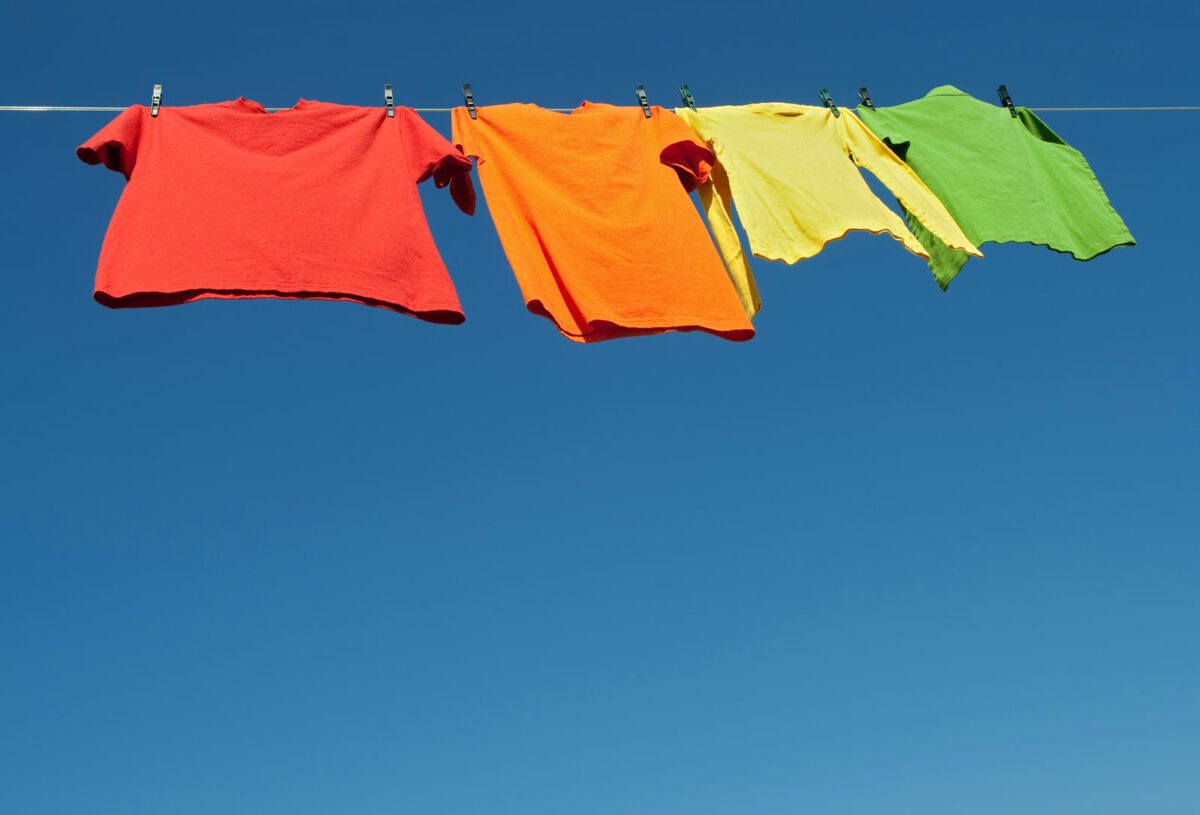
Use an Iron
High temperatures can also be used to stretch out materials. Polyester and spandex fabrics stretch well with hot water and a clothing iron. Preheat a garment iron to moderate heat and lay the polyester jersey on an ironing board. Spritz the top side of the clothing and both ends of a big, clean towel with hot water in a spray bottle.
Stretching a soccer jersey using an iron can be effective, especially if the jersey is made of a material that responds well to heat and gentle stretching. However, it’s important to proceed cautiously to avoid damaging the fabric. Here’s a step-by-step guide:
Materials Needed:
- Iron
- Ironing Board
- Damp Cloth or Pressing Cloth
- Water Spray Bottle (optional)
Steps:
- Prepare the Iron: Set your iron to a heat setting appropriate for the jersey’s fabric. If unsure, start with a lower heat setting and gradually increase if necessary.
- Lay the Jersey Flat: Place the soccer jersey on the ironing board. Smooth out any wrinkles or folds.
- Moisten the Fabric: Lightly dampen the jersey with a water spray bottle or use a damp cloth. The fabric should be moist but not soaking wet.
- Cover with a Cloth: Place a damp cloth or pressing cloth over the area of the jersey you want to stretch. This protects the jersey from direct heat.
- Iron the Jersey: Gently press the iron over the cloth-covered area. Do not use the steam setting, as the damp cloth will provide the necessary moisture.
- Stretch the Fabric: While the fabric is warm and slightly damp, gently stretch it by pulling at the edges. Focus on the areas you want to loosen.
- Let it Cool and Dry: After stretching, leave the jersey flat on the ironing board to cool and dry. This helps set the stretch.
- Repeat if Necessary: If the jersey hasn’t stretched enough, you can repeat the process. Be cautious not to overstretch or overheat the fabric.
Tips:
- Fabric Type: Check the care label on your jersey. Some materials, like synthetic fibers, are sensitive to heat and might not be suitable for this method.
- Gentle Stretching: Avoid aggressive pulling, as it can damage the jersey’s seams or fabric.
- Avoid Direct Heat: Never place the iron directly on the jersey, especially if it has prints or logos.
Caution:
- Heat Sensitivity: Be mindful of the jersey’s heat sensitivity. Excessive heat can cause shrinking, melting, or discoloration.
- Prints and Embellishments: If your jersey has any prints, badges, or other embellishments, be extra cautious, as heat can damage these details.
Using an iron to stretch a soccer jersey can be a delicate process. It’s important to balance the heat and stretching to achieve the desired fit without damaging the jersey.

Steaming
Using steam to stretch a soccer jersey is a method that can be effective, especially if the jersey is made of a stretchable fabric like polyester. Here’s a step-by-step guide on how to do it:
Materials Needed:
- Steam Iron or a Garment Steamer
- Clean Water (for the steamer or iron)
- Flat Surface (like an ironing board)
- Towels or similar fabric to protect the jersey
Steps:
- Prepare the Jersey: Lay the jersey flat on the ironing board or another suitable surface. If it’s exceptionally delicate or has prints/embellishments, you might want to turn it inside out to protect the design.
- Heat the Steamer/Iron: Fill your steamer or steam iron with water and let it heat up. Ensure it’s set to a temperature suitable for the jersey’s fabric.
- Steam the Jersey: Hold the steamer or iron a few inches away from the jersey. Avoid direct contact with the fabric to prevent heat damage. Gently steam the jersey, focusing on the areas you want to stretch.
- Gently Stretch: While the fabric is still warm and damp from the steam, gently stretch the jersey in the areas you want to loosen. Be careful not to overstretch, as this can damage the fibers.
- Let it Dry: After stretching, lay the jersey flat on a dry towel and allow it to air dry completely. Avoid using a dryer as the heat can cause the fabric to shrink back.
- Repeat if Necessary: If the jersey hasn’t stretched enough, you can repeat the process. However, be cautious not to overstretch the fabric frequently.
Tips:
- Check the Fabric: Ensure the jersey’s fabric can handle heat and moisture. Some materials may be damaged by steam.
- Be Gentle: Excessive stretching can damage the jersey’s fibers, seams, or prints.
- Protect the Design: If your jersey has prints, badges, or other designs, protect them from direct heat.
- Test First: If unsure, test a small, inconspicuous area first to ensure the fabric responds well to steaming.
Caution:
- Avoid Direct Contact: Don’t let the hot surface of the iron touch the jersey directly, especially if it’s synthetic, as it can melt or distort the fabric.
- Water Quality: Use distilled water if tap water is hard, as minerals can build up in the steamer and stain the fabric.
Using steam is a gentle way to stretch a jersey, but always proceed cautiously to avoid damaging the fabric.

Are Soccer Jerseys Tight?
Whether you want a professional-quality jersey to wear while participating on the field or a jersey of your favorite player to use while screaming from the sidelines, finding the proper size is critical for maximum comfort.
Soccer jerseys come in various sizes, some being cut larger than others. Genuine jerseys also feature a snugger fit, as modern athletes desire their uniforms to be as light as possible. Nike jerseys are, overall, relatively uniform in size.
Do Jerseys Shrink in the Dryer?
You may adore those sports jerseys of your favorite star that you picked up at the sporting goods store, but it won’t look quite right if it’s too large for you. Some jerseys are made of a cotton-polyester combination, while others are made of 100 percent polyester that does not shrink.
If your jersey contains cotton, it may shrink it in the washing machine. Jerseys made of poly-cotton fabric will shrink 3-4 percent, whereas cotton clothing will shrink 7-10 percent when laundered for the first time.

How to Prevent Soccer Jerseys from Shrinking?
Stretching a jersey is easy, but repetitive strains are bad for the fabric. It’s critical to carefully care for your jersey once you’ve restored it to its original size to avoid additional shrinkage. Here are some tips that you can use to prevent your soccer jerseys from shrinking:
- The most straightforward approach to keep garments from shrinkage is to wash them with hands. If you wash your fabric in the machine, avoid the heavy-duty cycle. This loop spins at a high rate, stretching the fibers.
- To avoid further shrinkage, use a lower thermal setting instead of high temperatures when drying the jersey in the machine. To prevent wrinkling, permanently remove the jersey from the dryer as soon as possible.
- If possible, avoid using the dryer. It will reduce the chances of shrinkage.
Official Soccer Jerseys
Supporters and athletes who purchase authentic, officially licensed soccer jerseys want to ensure their money is well-spent. Nobody wants a soccer jersey that fits fine initially but tightens after a few washes.
Therefore, it is necessary to learn and know how to prevent shrinkage and stretch your soccer jersey to its maximum size. With the ways mentioned above, you can easily stretch your soccer jersey and save money that might be wasted on buying a new soccer shirt.
The stretching options can slightly stretch polyester, and if you’re looking for it to loosen a little bit, then you could be in luck. If the jersey is more like a compression top, it’s time to get another one – save the frustration. Here are a few best-sellers on Amazon to buy:
- Junior boys’ athletic jersey
- Regular fit
- Crewneck provides full coverage
- Moisture-absorbing AEROREADY helps you stay dry
- Breathable crewneck jersey made for soccer
- Regular fit is wider at the body, with a straight silhouette
- Crewneck provides full coverage
- This product is made with recycled content as part of our…
- Juniors’ V-neck soccer jersey made in part with recycled…
- SLIM FIT: Snug through the body and arms
- FEEL DRY, STAY DRY: adidas AEROREADY manages your body’s…
- CLASSIC COMFORT: V-neckline keeps its shape
- MADE WITH RECYCLED CONTENT: Made with a series of recycled…
Product: Updated 2024-07-24 | Images: Amazon Product Advertising API | #ad – soccerblade.com is an Amazon Associate
Share the post "How to Stretch a Soccer Jersey or Apparel (Great Ideas)"
Joel is a seasoned soccer journalist and analyst with many years of experience in the field. Joel specializes in game analysis, player profiles, transfer news, and has a keen eye for the tactical nuances of the game. He played at various levels in the game and coached teams - he is happy to share his insight with you.







